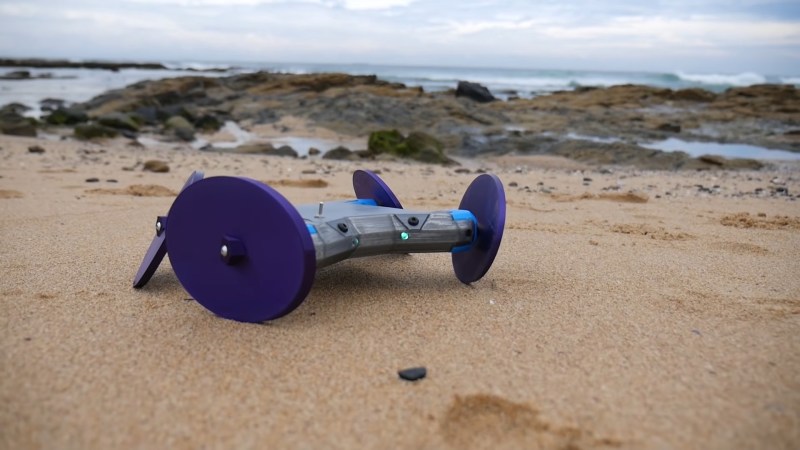When we talk about wheels, the vast majority of the time we’re talking about ho-hum cylindrical rollers as seen on all manner of human conveyances. However, there are all manner of wild and wacky shapes that roll, and having had some experience with them, [Maker’s Muse] decided to take a shot at having a robot drive on them. (Video, embedded below.)
The benefit of a 3D printer is that it makes producing these parts with strange geometries a cinch. The video shows a variety of designs, from the wobbly “Nightshades” to the entertaining “Prongle” wheels being put through a variety of tests. In an attempt to equalise the playing field, each design was matched in its surface area so as not to artificially bias the results.
While the wobbly designs look strange, they also come with some benefits over simple disc wheels, providing extra traction on both carpet and sand. Particularly impressive was the performance of the 8-spoke wheels on the beach, though as this design mimics real-world sand tyres, we’re not surprised at the results. We’ve seen similar 3D printed parts do the job for driving on water, too.















Excellent presentation with loads of fun! It seems to me that the Spokes wheels design in use in the video features the inner diameter of a plain disk wheel. That is, the inner diameter of the star <(. Why not replace the inner disk wheel of the spoke design with "prongle"-like 3d shape.
I have the feeling such a system could be used into water as a propeller/steering system .
Very enjoyable video!
Another outstanding Hackaday post.
(1) It has occurred to me that in comparing “traction” between wheel types, one must first define what is meant by that term so that all the wheels really are evaluated fairly.
In its simplest form, traction is about the effects of coefficient of friction between the wheel and the surface on which it rides. But when you run a wheel on a non-planar surface (like the bumpy carpet) or a compliant surface (like sand) then additional and different effects contribute to the apparent traction.
For example, even if the coefficient of friction is the same between all wheels, the multi-segmented wheel on carpet will necessarily have an advantage over the simple disk owing to its ability to mechanically engage the “bumps” in the carpet. Likewise, I fully expected the wobble wheel to outperform the simple disk on sand, because slippage there translates to displacement of sand, improving traction.
(2) Regarding the beach tests: None of the wheels had sufficient contact surface area to prevent the machine from sinking up to its belly, but I don’t regard that as a fault of wheel geometry. I think another beach test with much larger wheels would more conclusive.
(3) I can’t help but notice the similarity between the sand tracks left by the wobble wheel, and the tracks left in sand by a sidewinder snake. I think there is some real merit in developing the wobble wheel idea further. It would be a real treat to see a dune crawler fabricated with full-sized automobile tires, mounted to wobble hubs.
(4) The wobble action on the present motor platform is asynchronous… each wheel does its own thing. I wonder if a wobble “traction” would be further improved if the wobble “phase” at each wheel was coordinated.
I’m just going to leave this here.
https://www.youtube.com/watch?v=Afofc_Jt86s
What if we shrank the wobbles, and placed them onto some sort of consumable but wear-resistant material? But it would have to have some shock resistance, so maybe it could be hollow and filled with gas…
Is it just me or does anyone else think the wobblies make tracks like a sidewinder? (Which might explain why they did better in sand than regular wheeles.)
It is not just you.